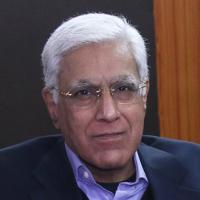
In the first of a two-part series of interviews on the state of the economy before the Budget is presented on February 1, India’s former chief statistician and one of the country’s renowned economists says that the condition of the MSME sector, which accounts for 30% of the economy and perhaps 40% of employment, is the most worrying and critical problem that must be tackled.
Unfortunately, there’s no direct or immediate solution and, therefore, this is also a conundrum facing the finance minister. Pronab Sen added that hopes of achieving 6% growth next year critically depend upon reviving the MSME sector.
In an interview to The Wire, Sen, who is presently the country director of the International Growth Centre, also identified unemployment as a second critical problem. He pointed out India’s low labour participation rate, which has fallen below 40%, also means there is a sizeable amount of unemployment that is disguised and not recorded by the unemployment rate. He said for this to be tackled the effective revival of the MSME sector is critical.
In this connection, Sen said that increasing inequality, recently highlighted by an Oxfam report which said that 5% of Indians own more than 60% of the country’s wealth whilst the bottom 50% share only 3%, is “extremely worrying”. Not only is this suppressing demand and, therefore, holding back growth, but it is only because the Indian people are resilient and, perhaps, passive that this inequality has not led to worrying social disturbance.
Sen said that although the size of India’s GDP is now bigger than it was in the pre-pandemic year, 2019-20, it’s also true that GDP remains 7% or thereabouts below the pre-pandemic trend. For the economy to return to the old trend would require growth in excess of 6%, perhaps 7% or 8%, for several years and that, at the moment, seems highly unlikely.
Speaking about GDP growth next year i.e. 2023-24, Sen said India can only achieve levels of 5.5% and 6% (after 4.2 and 4.4% in the second half of this financial year) if the finance minister can find a way of reviving the MSME sector. However, the slowing down of exports, because of recession in many western countries, will also impact the MSME sector, because a lot of India’s exports come from this sector. He added that the slowing down of exports means it’s very unlikely that India can grow above 6% next year. As he put it, we should be happy with 5.5 or 6%.
Speaking about the fiscal deficit, Sen says it poses a tricky problem for the finance minister as she prepares to present the Budget. How she handles it depends upon her answer to two questions. First, is the private sector at a point where it looks as if it’s about to revive private investment? Second, does she believe the government has done enough to revive private investment? Although the finance minister has more data and information than we do, nonetheless her answer to these questions will be based on her hunch or, as he put it, an attempt “to feel the pulse”. Only in the fullness of time will we know if her hunch, on which her decisions are based, is correct or wrong. This is why budgets are essentially, as he put it, “a gamble”.
At the end of the interview, Sen spoke about the government’s failure to conduct the census and how this means we are, as he put it, “driving blind” just when we need our eyes wide open. He said this is one of his biggest concerns and he cannot understand both why this government has not already done the census and, secondly, why it hasn’t set a date for doing it. In the absence of an up-to-date census, it means we are dependent on out-of-date data and information and do not know the true condition of the country.






